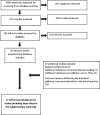Palliative care after stroke: A review
- PMID: 33949268
- PMCID: PMC8366189
- DOI: 10.1177/17474930211016603
Palliative care after stroke: A review
Abstract
Background: Palliative care is an integral aspect of stroke unit care. In 2016, the American Stroke Association published a policy statement on palliative care and stroke. Since then there has been an expansion in the literature on palliative care and stroke.
Aim: Our aim was to narratively review research on palliative care and stroke, published since 2015.
Results: The literature fell into three broad categories: (a) scope and scale of palliative care needs, (b) organization of palliative care for stroke, and (c) shared decision making. Most literature was observational. There was a lack of evidence about interventions that address specific palliative symptoms or improve shared decision making. Racial disparities exist in access to palliative care after stroke. There was a dearth of literature from low- and middle-income countries.
Conclusion: We recommend further research, especially in low- and middle-income countries, including research to explore why racial disparities in access to palliative care exist. Randomized trials are needed to address specific palliative care needs after stroke and to understand how best to facilitate shared decision making.
Keywords: Stroke; end-of-life; palliative care; shared decision making; stroke unit.
Conflict of interest statement
References
-
- World Health Organization Geneva. National cancer control programs: policies and managerial guidelines, 2nd edn. Geneva: Author, 2002. - PubMed
-
- Braun LT, Grady KL, Kutner JS; et al.Palliative care and cardiovascular disease and stroke: a policy statement from the American Heart Association/American Stroke Association. Circulation 2016; 134: e198–225. - PubMed
-
- Elwyn G, Laitner S, Coulter A, Walker E, Watson P, Thomson R. Implementing shared decision making in the NHS. BMJ 2010; 341: c5146. - PubMed
Publication types
MeSH terms
LinkOut - more resources
Full Text Sources
Other Literature Sources
Medical


